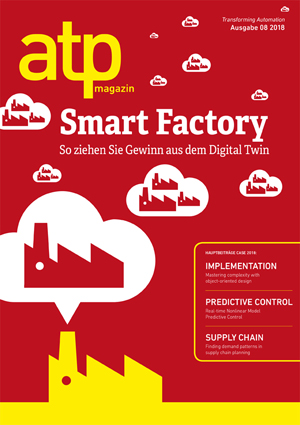Effiziente Aufgaben-Allokation in Roboter-Teams
Wissens- und semantikbasierte utility calculation
DOI:
https://doi.org/10.17560/atp.v60i08.2367Schlagworte:
Industrie 4.0, Roboter, Aufgaben-Allokation, Utility CalculationAbstract
With the advent of Industry 4.0 era, employing a team of robots within a factory floor or a warehouse is pretty prevalent today as robots can perform a known task with higher accuracy and efficiency if its capability permits. Efficiency and throughput of such a setup depend on careful task assignment and scheduling, which further depend on utility calculation. Though there exists a number of techniques to perform efficient task allocation, they assume the utility values are available and static. They neither consider all the relevant parameters nor the dynamic changes that may occur during task execution. Moreover, methods of automating such dynamic utility calculation (both at the start and at runtime) based on knowledge and semantics are not present and this is a hindrance to building a fully automated robotic workforce. In this article, we explore an avenue of semantic-based dynamic utility calculation and showcase its application for a use-case.
Literaturhinweise
Burgard, W., Moors, M., Fox, D., Simmons, R., & Thrun, S. (2000). Collaborative multi-robot exploration. In Robotics and Automation, 2000. Proceedings. ICRA'00. IEEE International Conference on (Vol. 1, pp. 476-481). IEEE.
Dahl, T. S., Matarić, M., & Sukhatme, G. S. (2009). Multi-robot task allocation through vacancy chain scheduling. Robotics and Autonomous Systems, 57(6-7), 674-687.
Lin, L., & Zheng, Z. (2005, April). Combinatorial bids based multi-robot task allocation method. In Robotics and Automation, 2005. ICRA 2005. Proceedings of the 2005 IEEE International Conference on (pp. 1145-1150). IEEE.
Sarkar, C., Paul,H. S. & Pal, A. (2018). A scalable multi-robot task allocation algorithm. In International Conference on Robotics and Automation (ICRA). IEEE, 2018.
Hermann, M., Pentek, T., & Otto, B. (2016, January). Design principles for industrie 4.0 scenarios. In System Sciences (HICSS), 2016 49th Hawaii International Conference on (pp. 3928-3937). IEEE.
Tenorth, M., & Beetz, M. (2009, October). KnowRob—knowledge processing for autonomous personal robots. In Intelligent Robots and Systems, 2009. IROS 2009. IEEE/RSJ International Conference on (pp. 4261-4266). IEEE.
Stenmark, M., & Malec, J. (2015). Knowledge-based instruction of manipulation tasks for industrial robotics. Robotics and Computer-Integrated Manufacturing, 33, 56-67.
Gerkey, B. P., & Matarić, M. J. (2004). A formal analysis and taxonomy of task allocation in multi-robot systems. The International Journal of Robotics Research, 23(9), 939-954.
Nnaji, B. O., & Yannacopoulou, M. (1988). A utility theory based robot selection and evaluation for electronics assembly. Computers & industrial engineering, 14(4), 477-493.
Parkan, C., & Wu, M. L. (1999). Decision-making and performance measurement models with applications to robot selection. Computers & Industrial Engineering, 36(3), 503-523.
Settembre, G. P., Scerri, P., Farinelli, A., Sycara, K., & Nardi, D. (2008, May). A decentralized approach to cooperative situation assessment in multi-robot systems. In Proceedings of the 7th international joint conference on Autonomous agents and multiagent systems-Volume 1 (pp. 31-38). International Foundation for Autonomous Agents and Multiagent Systems.
Stephan G., Pascal H., Andreas A. (2007) Knowledge Representation and Ontologies. In Studer R., Grimm S., Abecker A. (eds) Semantic Web Services. Springer, Berlin, Heidelberg
Bechhofer, S. (2009). OWL: Web ontology language. In Encyclopedia of database systems (pp. 2008-2009). Springer, Boston, MA.
Dey, S., Jaiswal, D., Dasgupta, R., & Mukherjee, A. (2015, December). Organization and management of semantic sensor information using SSN ontology: An energy meter use case. In Sensing Technology (ICST), 2015 9th International Conference on (pp. 468-473). IEEE.
Ruchkin, I., Selva Samuel, S., Schmerl, B., Rico, A. & Garlan, D. (2016). Hardware power modeling for turtlebot. Abgerufen von: http://acme.able.cs.cmu.edu/pubs/uploads/pdf/MARTCPS2016.pdf
Veröffentlicht
Ausgabe
Rubrik
Lizenz
Die Zeitschrift und alle in ihr enthaltenen Beiträge und Abbildungen sind urheberrechtlich geschützt. Jede Verwertung außerhalb der engen Grenzen des Urheberrechtsgesetzes ist ohne Zustimmung des Verlages unzulässig und strafbar. Das gilt insbesondere für Vervielfältigungen, Übersetzungen, Mikroverfilmungen und die Einspeicherung und Bearbeitung in elektronischen Systemen. Auch die Rechte der Wiedergabe durch Vortrag, Funk- und Fernsehsendung, im Magnettonverfahren oder ähnlichem Wege bleiben vorbehalten.


